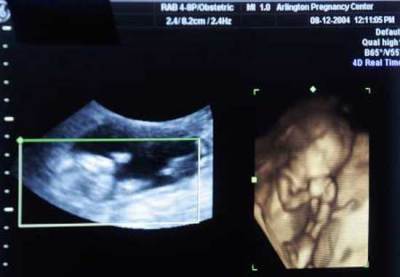Roe v. Wade: Unscientific and outdated

Mississippi’s 15-week limit on elective abortions — science-based, bipartisan, and reflecting the consensus of the governed — is forcing abortion proponents to face an inconvenient set of facts.
For decades, those who championed unrestricted abortion until birth advanced two arguments to supersede all others. First, an unusually stringent loyalty to legal precedent that is questioned even by pro-choice legal scholars; second, that science should reign as the preeminent authority in policymaking.
In making these two rules the platform of their defense, guardians of Roe have backed themselves into an uncomfortable corner. Undeniable realities, grounded in objective science and technological advancements, now compel the United States Supreme Court to modernize an antiquated law.
From its inception in 1973, the justification for Roe v. Wade rested on tenuous ground, at one point described as “arbitrary” even by the decision’s author, Justice Harry A. Blackmun. The Court grounded Roe’s judicial precedent “in the light of present medical knowledge,” initially shaky ground that has become quicksand as medical knowledge has advanced.
Roe recognized the incontrovertible fact that advances in scientific technology, namely developments in embryology and fetal neuroscience, could negate abortion law precedent. The nearly half century since Roe has produced exactly that, with twelve specific lines of scientific evidence exposing the Supreme Court’s prior rulings on abortion as antiquated relics, unusually cruel, and far out of step with both scientific knowledge and international law.
For example, the claim that an unborn child must have a developed brain cortex in order to experience conscious pain and suffering is debunked by five distinct lines of peer-reviewed evidence.Both animals and humans display consciousness and suffering whether or not the cortex is present, intact, or mature. Species including reptiles, amphibians, fish and even birds lack the entire region of the neocortex — supposedly responsible for consciousness and the capacity to suffer — yet all still show both functions. Studies show that completely removing the cortex from the brains of various mammal species does not prevent them from reacting to painful stimuli.
Likewise, children with conditions like hydranencephaly are conscious and psychologically perceive suffering and pain. And while our cortex doesn’t mature until around 25 years of age, no one claims that children, teenagers or young adults cannot experience pain. This demonstrates that one’s experience of suffering is not dependent on cortex development as abortion proponents insist. The claims that fetal consciousness is not present until late in pregnancy have been thoroughly debunked. You can read the peer-reviewed evidence yourself at www.LozierInstitute.org/DobbsBrief.
Following the science also reveals that fetal feelings and emotions emerge much earlier than abortion proponents would like to believe. We now have established that older regions of the brain such as the thalamus, not the cortex, are where human consciousness and emotions arise, beginning as early as 12 weeks. Brain imaging from both animals and humans, for example, shows that losing consciousness as well as the ability to perceive pain comes from suppressing the thalamus, not the cortex; similar evidence comes from brain stimulation studies designed to elicit pain responses as well as from medical ablation (a procedure which removes a layer of tissue). The preponderance of scientific evidence now shows that unborn children exhibit consciousness as well as the capacity for suffering as early as 12 weeks.
Most compelling, however, is the evidence of fetal behavior in the womb, especially the unborn child’s sensitivity and response to pain. In the last two decades alone, science has made tremendous progress in understanding fetal neurodevelopment. Observing the fetus in the womb through 4D ultrasounds during invasive medical procedures performed in utero reveals that as early as the 15th week of gestation, “the fetus is extremely sensitive to painful stimuli.”
Contrary to the myth that they are in a constant state of sleep in the womb, unborn children actually wake up in response to painful stimuli. Moreover, premature babies born as early as 21 weeks not only respond to pain but exhibit stronger responses to pain the earlier they are delivered, indicating that unborn children can experience pain and suffering on a more heightened scale due to lack of cortical pain inhibition.
Through technological advancements, this peer-reviewed evidence has only become more compelling as ultrasonographic studies have literally brought it to life, giving us a window into the womb for the first time. A study published earlier this year found that fetuses at approximately 29 weeks grimaced with pain when their thighs were injected with anesthetic prior to a painful intrauterine surgery; another study this summer observed the same result — a pained grimace upon being pricked with a needle with anesthetic — with a 21-week-old fetus about to undergo heart surgery in the womb.
These examples are particularly salient when making the case for the humanity of the unborn and their ability to consciously experience suffering and emotion. Facial expressions signify pain perception in individuals otherwise excluded from verbal expressions, such as young children or those with disabilities, but this is not true for unconscious patients. We can assume without a doubt that the unborn child is likewise “not merely reacting to pain in an unconscious, reflexive manner” but expressing “a conscious experience of suffering through a universal pain language.” It is perhaps impossible to find a more profound indicator of unborn humanity than the way these studies use high-resolution ultrasound to make visible the faces, emotions, hand gestures, and limb movements of a child in the womb.
As science, medicine and technology have progressed since 1973, the precedent of U.S. abortion law has crumbled. The once-impossible question the Court described as “when does life begin?” is now an objective, scientifically valid conclusion, accepted as the moment when sperm and egg fuse. Advanced studies in fetal behavior, neurology, and psychology have put to rest any uncertainty that the fetus is alive, concluding that unborn children are not only conscious beings but capable of suffering and feeling pain. And technology in the last five decades has allowed the unborn child to communicate with the outside world in ways that were not possible before — compelling us to confront abortion as the barbaric and unquestionably cruel death it is.
Roe is a relic. Outdated science is no longer an excuse to look the other way as the unthinkable is done to our fellow human beings. The scientific evidence stands as a solemn indictment, that after half a century, it is time to modernize our law.
David A. Prentice, Ph.D., is vice president and research director of the Charlotte Lozier Institute. He is an internationally-recognized expert on stem cell research, cell biology and bioethics.




























